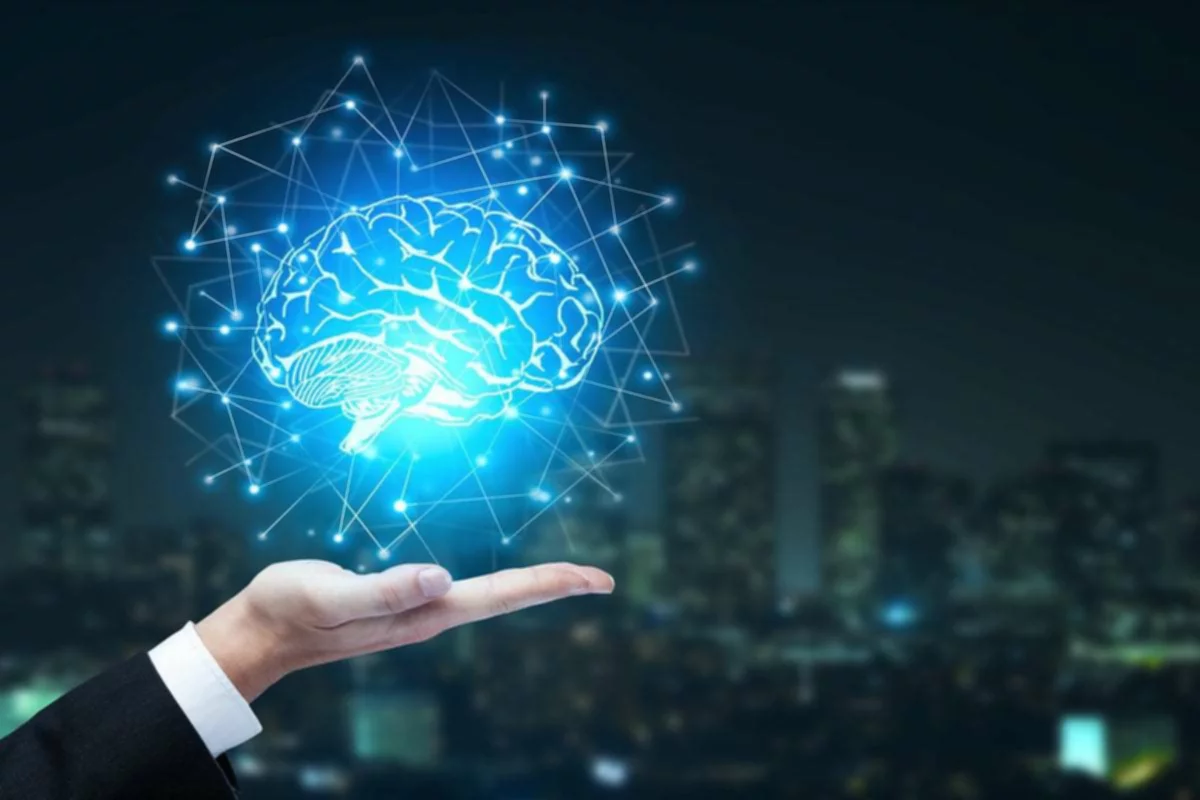- Neural networks: What is it?
- What tasks can neural networks perform?
- The operation of neural networks
- Types of neural networks
- Task area of neural networks
- Areas of application of neural networks
- Creating an operation algorithm for neural networks
- Pros and cons of neural networks
- The future of software neural structures
- Final words
Neural networks are a complex and somewhat tricky concept related to AI. The fear that computer minds will first replace humans and then conquer or destroy them is unsound in principle. Simply put, neural networks are mathematical algorithms. Principles of human-neuron interaction lie at the bottom of this technology. However, if our organism was perfectly designed to transmit nerve impulses from the organs to the brain, the neural network is shorn of that. It would perform only a limited number of specific tasks.
It is a computer program capable of learning from the data and the examples it was given. On this basis, the neural network creates its own algorithms and rules. Initially, the program’s operating principles repeated the human brain’s signaling structure. Its neurons are connected by synapses transferring signals to each other, making a unique connection.
Therefore, programs are capable of performing tasks of varying complexity. They can recognize visual information and also perform complex calculations. At first, this technology was used in simple smartphone apps; now, the field of application of neural networks is an array of research in scientific projects on a global scale.


Neural networks: What is it?
This IT-related technology has been developed for a considerable amount of time. In the 1940s, the research division of the University of Chicago suggested the concept. The first single-level model was finally used in a demonstration after 20 years. The development of computer technologies and the rise of powerful computing machines contributed to the development of various programs. The boom of the computer game industry gave a hefty boost to research in the area of neural networks. Countless actions and operations must be processed simultaneously on multi-user gaming platforms. A neural network’s structure and working principles are similar to those of modern game graphics processors, which combine thousands of cores onto a single chip. The architecture of simple calculations transmitting data to each other, forming an AI, is the principle of the neural network.
A data scientist carries out the development of neural networks. The work of a mathematician-programmer includes the following stages:
- data collecting
- their analysis
- building algorithms
- programmed learning
- testing
A large volume of information is processed and analyzed to discover new connections in the data array. As a result, it is possible to develop identical algorithms for neural network improvement and training.
What tasks can neural networks perform?
Self-learning programs repeatedly utilize the strategies used by the human brain to tackle subjects. The algorithm operates following the principle of vision to recognize visual images. The neural networks’ tasks incorporate:
- data classification
- forecasting grounded on previous experience
- visual content recognition
- deciding on a solution to problems
AI neurons are positioned on various layers in computer programs to enhance machine learning. The first level accepts data. The second one is covert and the most complicated. It analyzes the data taken in and creates structural connections. The outcome is presented in the third output layer. This procedure shows neural networks do not have an imagination or other human emotions. They function as a result of embedded formulas. The ability to independently create algorithms for solving problems (learning) is a primary distinction from various computer programs.

The operation of neural networks
All artificial neurons in the structure have connections of different significance. The weight given to a connection increases in proportion to its importance. The links’ value and weight are adjusted when the data enters the output stage and moves through the network’s various levels. How a neural network works:
- links are assigned an arbitrary value — weight;
- data sequentially passes through all network layers;
- the weight of the data importance is adjusted to obtain constant threshold results;
- the neuron alters to the next level after exceeding the specified weight threshold.
Huge data arrays are processed with the aid of this neural network architecture, and the outcomes are contrasted at each step. All discovered patterns are incorporated into neural networks’ learning process.
Types of neural networks
There are numerous types and subspecies of neuronal structures. Various types of neural networks have different architectures and underlying operating principles. Subtypes are hybrids of several structures designed to do more complex tasks or speed up calculations. Networks can be trainable or self-learning, binary or figurative, and homogeneous or complex poly systems. Depending on the architecture, the classification of neural networks goes as follows:
- Homogeneous type gives a quick result straight away after loading specific data;
- Feed-forward neural network architectures are used to recognize visual information and have data movement in one direction;
- Recurrent types transport information through various stages in all directions; they can model and generate texts and link speech into dialogues;
- Capable of generating or creating pictures, texts, etc.
Homogeneous and direct distribution structures are the simplest. They are more often used as an element of more complex systems. Rectilinear networks directly transfer data from the input to the output layers in one direction.
The RNN type has a memory. If the forward direction network analyzes each time from the starting point, the recurrent structure is repelled from the current state. Therefore, feed-forward neural networks are often applied in clustering, recognition, and prediction. The recurrent form of the network is used to bring forth sequences.
Task area of neural networks
Neural networks are intended to solve problems that exist all the time in our daily lives, but they do it on a greater scale. It can quickly give you the results on such fundamental questions:
- Grouping the provided objects into categories. The neural network can divide the input into several groups or make a selection from a set of only specific item categories.
- Regression. It is the processing and analysis of data, as a result of which you need to get a specific number. Some examples: a selection among the passports of only people of a certain age and the assessment of any property by the amount.
- Time series forecast. It is long-term forecasting based on analyzing a time series of values in dynamics.
- Breaking down a set of information into clusters following specific criteria.
- Creating or transforming information arrays. It is used in editing and generating unique texts and images.
The ability of AI neurons to recognize things is still the one that has earned its spurs. Search engines, social networks, parallel computing, and challenging mathematical problems solutions all use neural network algorithms extensively.
Areas of application of neural networks
There are a variety of neural network applications depending on the type and tasks assigned. Common types of artificial intelligence:
- Chatbots that can understand the meaning of voice messages from customers and answer their questions. They are often applied by banks or other companies to employ fewer customer support workers.
- Programs where a neural network generates images according to a text description.
- Setting filters and shooting different objects on a smartphone camera is likewise regulated by artificial neurons.
- Dealing with sound with the help of neural networks enables you to reproduce the text in a specific person’s voice. Such programs can select background music in the video sequence, analyzing its visual meaning.
- Neural networks as translators. These programs are typically installed in call centers to answer standard questions.
Having many applications, the neural network aims to make it easier for people to interact with virtual environments. Using neural networks still involves subtleties that need to be worked out. AI can only function with data sets that have already been provided. New areas with no relevant data are beyond the neural network’s power.
Creating an operation algorithm for neural networks
Various steps are involved in developing the neural network’s activity and operating principles. When creating such programs, the experts use their understanding of mathematics, analyze unstructured data arrays, and then come up with a program algorithm. It will serve as the framework to build the neural network. Step-by-step creation goes as follows:
- setting a problem for building a network;
- collecting relevant data that AI will use;
- analyzing and detecting incorrect data;
- training neural networks for them to independently determine the relationships between objects and data;
- testing neural networks to get top-notch results.
Constant training of neural networks lies at the root of all the work. Data can constantly change and be updated, so experts monitor network performance in real-world conditions.
Pros and cons of neural networks
Neurostructures are an example of an IT invention that aims to make using computers comfortable for users. The advantages of neural networks that make them popular in many domains include:
- doing routine work with data;
- managing great arrays in a short period;
- exclusion of the human factor leading to errors;
- strict adherence to the assigned task, cutting off excess information;
- the ability to produce the best result even if the functional elements of the program are damaged.
Networks still have negative sides despite constant advancement and the ability to deliver accurate results with the proper configuration. The risk of inaccurate results is one of the main disadvantages of neural networks. Therefore, these structures are only used as a part of a solution to a common issue. Their work results from the initial data they chose, and the final data won’t matter if the initial data turns out to be inaccurate.
The future of software neural structures
Although AI has made a quantum leap, neural networks won’t be able to completely replace humans in critical roles, at least not anytime soon. Neural networks are responsible for performing routine tasks, which include analyzing enormous amounts of data and comparing them with patterns. The network is capable of generating standard or most characteristic answers and responses. The human brain has a sensitive nature. It does not require the crude correlation of vast amounts of information to make discoveries.
Some scientists fear that AI may emasculate all the cultural achievements of humanity with the amount of content it produces. The excessive presence of artificially written melodies, texts, and pictures might contribute to the fact that people’s sense of beauty may wear thin. However, neural networks are far from perfection so far. The search results look dull and raw without a competent query and an organized database.
Final words
Neural networks successfully deal with a great array of tasks in various fields. Data scientists must constantly analyze the programs’ performance, train them, and update the data arrays. Since neural networks can’t create something from scratch, they rely on prior knowledge to guide their decisions.
Neural networks make the work of many programs efficient and interact perfectly with the human intellect. They reduce the risk of errors, although such programs are far from perfect.




